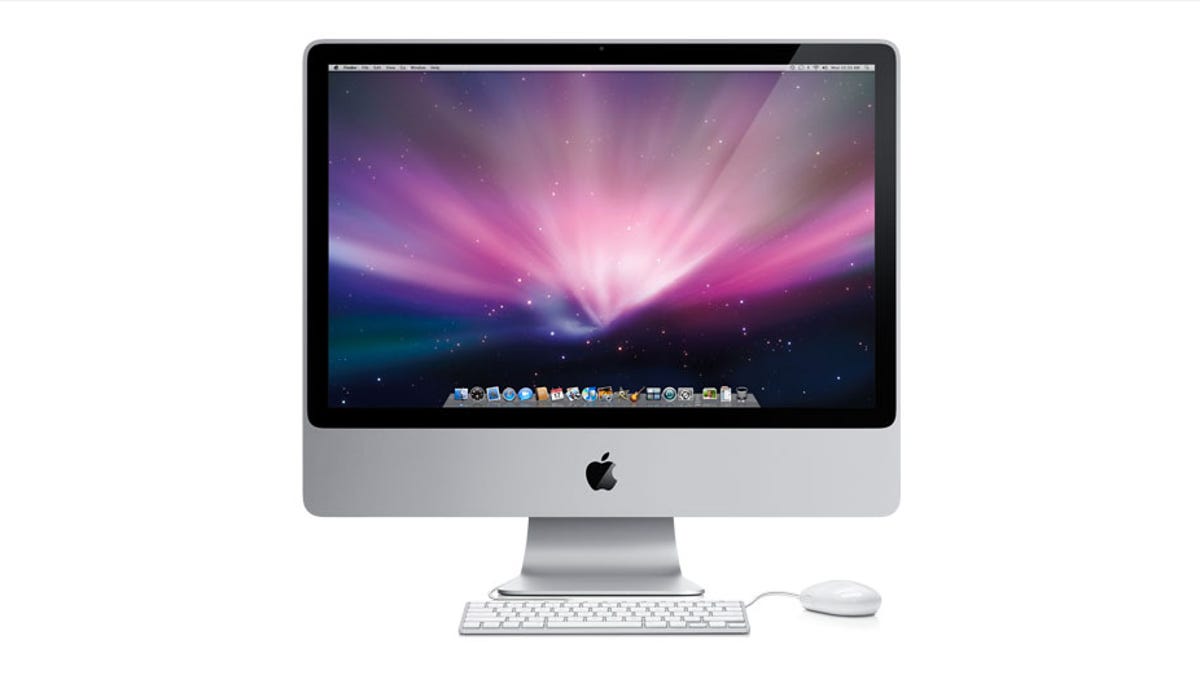As mobile future looms, Apple milks iMac margins
The new iMacs aren't all that different from their predecessors in price and features, signaling that amid a cratering desktop market, Apple's main Mac focus is the notebook.

Apple's long-awaited Mac desktop refresh Tuesday is evidence of the company's determination to preserve its margins in a category that's fast going out of style.
Audio
iMac's future
Tom Krazit and Charles Cooper talk about
where Apple's desktop PC might go from here.
Download mp3 (2.39MB)
Three Mac desktop categories were updated Tuesday, but only one really matters: the Mac Mini and Mac Pro aren't nearly as popular as the all-in-one iMac. Apple did improve the specifications of the iMac at the same price points, lowering the cost of acquiring a 24-inch version to $1,499. But it made few significant changes to a design that hasn't been updated since September 2007 and resisted calls to reduce the price of the iMac below $1,000, a psychological barrier that in troubled economic times could hurt Apple's sales, according to that line of reasoning.
In doing so, Apple is signaling that it cares more about margins than market share, at least when it comes to the iMac. After all, when people think about buying a new computer these days, they are shopping for a notebook, not a desktop.
Desktop sales are in freefall around the world; Gartner expects desktop shipments this year to decline 31 percent as the entire market for personal computers contracts by 11.9 percent. And Apple hasn't been immune to those trends. In the company's first fiscal quarter, Mac desktop sales were off 25 percent, which was actually steeper than the overall market decline during that period.
The interesting thing is that Apple doesn't seem to think price is the reason behind that decline. That's probably because Apple's customers are willing to pay slightly more for Mac desktops than they are for Mac notebooks, according to data from NPD Group. That is not the case in the Windows world.
The average selling price of a Mac desktop in the U.S. over the last six months was $1,503, while the average selling price of a Mac notebook was $1,493. Windows customers paid an average of $545 for their desktops over the last six months, while they paid $637 for their notebooks.
The reality is that regardless of price, desktop computers have fallen out of favor with the public, and Apple's pitch for the new iMacs--with a heavy emphasis on old-fashioned speeds and feeds--suggests that it no longer views the iMac as a product that is driving its growth, said Stephen Baker, vice president of industry analysis for NPD.
New Mac users are more likely to want notebooks, rather than desktops, because that's just how the overall computer buying patterns have shifted over the last five years, Baker said. There's a core group of Mac loyalists that might be faithful to the iMac, but new users intrigued by the Mac are far more likely to consider a MacBook than an iMac.
So, you give the older Mac fans what they want: faster iMacs with a more attainable 24-inch screen that could entice an upgrade from an aging 20-inch model. And by keeping the prices the same, you preserve profits that can be used to invest in other areas that are growing, such as notebooks and iPhones.
And those are the areas where Apple can choose more aggressive pricing strategies, said Baker. That may not come in the form of the oft-rumored Apple Netbook, but Apple has already shown a willingness to reduce MacBook prices, cutting the price of the entry-level MacBook below that $1,000 barrier to $999 in October.
Apple probably isn't going to get much more desktop market share: the category is crumbling, customers who buy solely on price aren't going to even consider Apple, and the iMac is no longer as unique a product as it was two or three years ago, when most major PC companies were still mostly selling bulky towers in the desktop category. So why lower the price, and therefore the profits? After all, once you lower prices in the computer industry, it's almost impossible to go back.
Tuesday's launch might be the beginning of the iMac's fade into the back corner of your local Apple retail store. It's arguably the computer that brought Apple back from the depths in the late 1990s, but 11 years later, mobile computing is the norm.